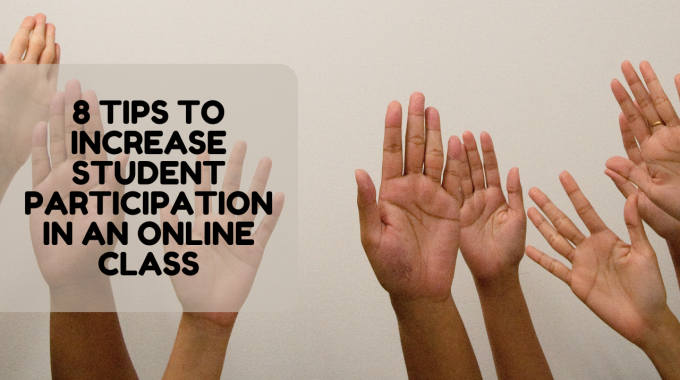Teaching English online to children is a lot more hands-on than teaching adults. It requires…

8 Tips to Increase Student Participation in an Online Class
The best way for students to learn is to be engaged and actively participating in classroom discussions and activities. There are some students who are always eager to participate and then others who are on the quieter side and prefer to keep to themselves.
Getting all students to participate in a traditional classroom can already be quite challenging, but with the physical distance and screen barrier between the teacher and students in an online class, the challenge deepens.
How can you make sure all your students are participating and engaging in your online class discussions and activities? Here are eight tips to help you with just that:.
Tip #1: Give students more time to think and then ask them to share when ready.

When asked to answer a question on the spot, it can be nerve wracking. To get students more ready to participate, give them some time to think about their answers before asking them to share their ideas with the class. You can even give the students a list of discussion questions ahead of time, so they can make some mental preparations before entering the class.
Tip #2: Use a Conversation Circle to have students choose who goes next.
Rather than the teacher always choosing the next student to speak up, students can be given that responsibility. The current student who speaks gets to choose the student who goes next. Every student knows they will have a turn soon, so they must pay attention and be ready with an answer when called upon.
Tip #3: Assign students different tasks.
One student can be responsible for reading while other students are responsible for giving answers to questions or giving feedback to answers. By having a responsibility, students are more likely to pay attention and to feel part of the conversation. The roles can be switched up on different slides and not every student has to participate on every slide.
Tip #4: Have students participate in activities together.

Some students feel extremely nervous speaking up alone in an online group class, so why not pair up the students or put them in groups of threes to participate in activities together. If you teach on Zoom, you can use Breakout rooms to put students in smaller groups.
Tip #5: Model the answer.
For open-ended questions, either the teacher or a student can provide a model answer to give the other students some ideas. Often when students see what’s expected of them, they’re more willing to share their own ideas.
Tip #6: Provide positive feedback.
Students often look to their teachers for approval, so use positive feedback to reinforce that your students are doing a good job. This will certainly encourage them to speak up more. You can also ask students to provide each other feedback. When they know they have to give feedback, they are more likely to actively listen to each other. A feedback session can also lead to more meaningful conversations about the topic.
Tip #7: Let students know it’s okay to make mistakes.

Students often feel pressured to appear perfect in front of their peers and don’t want to say anything wrong or embarrassing. As a teacher, it is your responsibility to create a classroom environment where students are not afraid to make mistakes. Make this clear at the start of class that everyone is there to learn and making mistakes is all a part of learning.
Tip #8: Give each student one free pass if they want to skip a question.
Giving students a free pass can make them feel more relaxed during class and actually increase their overall participation! If there’s a question a student absolutely doesn’t want to answer or doesn’t have an answer for, they can use their free pass.
We hope these tips will help increase student participation in your future online classes! If you have more tips and ideas, leave them in the comments below!



